Created: 2022-09-03
Updated: 2025-09-06
Company - Redwire
- Founded
- Country
- 2020
- USA
- Funding
- $100M+
- Previous Names
- Adcole Space, Deep Space Systems, Made in Space, Techshot
- Website
- http://redwire.space/
Product/Service
- Classification
- In-Space Manufacturing
- Category
- In-Space Manufacturing
Landing Pads
Space Mining
- Status
- Development
- First launch
- Not announced
- Redwire of Jacksonville, Florida, $12.9 million.
- The company will develop a grader, compactor, and microwave emitter into a scalable platform that removes rocks, compacts loose regolith, and melts or sinters regolith into a solid surface. This technology could enable dust mitigation areas, habitat foundations, roads, and landing pads.
- In 2023, Redwire was selected for a $12.9 million NASA Tipping Point award to prototype Mason, a first-of-its-kind manufacturing technology which seeks to build critical infrastructure on the surface of the Moon, including shielding structures (e.g., berms), landing pads, roads, and foundations for habitats.
- Mason is a tool suite comprised of a grader, a compactor and a microwave emitter, as well as instrumentation for process control and quality verification. Once mounted to a mobility platform (e.g., a rover), Mason’s Grader tool is utilized to push away rocks and level out surfaces. After grading, the Compactor is used to densify the regolith. Finally, the Microwave Emitter is used to sinter the regolith; that is, it uses microwave energy to heat the regolith to extremely high temperatures, such that the once powdery regolith fuses together to form a solid with properties similar to concrete.
Product/Service - PIL-BOX, Industrial Crystallizer
- Classification
- In-Space Manufacturing
- Category
- In-Space Manufacturing
Microgravity Research Payloads
- Fields
- Biological Research
Biotech
- Status
- Demonstrated
- First launch
- 2023
Bio-crystal Optimization Xperiment (PIL-BOX) platforms
- The PIL-BOX platform has exciting implications for advancing pharmaceutical research and development in space.
- The technology builds on Redwire’s extensive space crystallization flight heritage, which dates back to the space shuttle era through its Advanced Space Experiment Processor.
- Another biopharma-related breakthrough is the ability to grow large and highly ordered crystals for pharmaceutical use. On the same flight that returned heart tissue samples, Redwire received a batch of space-flown crystal experiments from its Pharmaceutical In-space Laboratory (PIL-BOX) platform.
- Redwire has 16 in-space investigations planned for PIL-BOX.
- Redwire is launching its fourth set of PIL-BOX experiments on the upcoming NG-21 mission.
- Redwire partnered with Lilly on two previous spaceflight missions using PIL-BOX in the past year. For the most recent investigation, PIL-02, Lilly researchers conducted an experiment aimed at accelerating the discovery of novel medicines against chronic diseases. Following the successful results of the PIL-01 experiment, which demonstrated that microgravity benefited insulin crystal growth, Lilly researchers will use the results from PIL-02 to expand their understanding of crystal formulations and how they can impact drug discovery.
- Redwire aims to launch more PIL-BOX experiments on upcoming CRS missions to the ISS. Prior PIL-BOX experiments have produced high-quality uniform crystals that could be used in antiviral and antifungal applications.
Industrial Crystallizer
- New drug development technology and a cancer-detection experiment to the International Space Station (ISS) as the company scales its in-space pharmaceutical drug development program based on the success of its PIL-BOX platform.
- To complement the existing PIL-BOX platform, Redwire is launching a high-volume Industrial Crystallizer that is capable of processing samples that are up to 200x the volume of what could previously be processed in the original PIL-BOX technology.
- The goal is to translate the insights gained from the PIL-BOX investigations into large-scale production for commercial applications.
- To validate this new hardware, Redwire is launching a first-of-its-kind experiment called Golden Balls, which will attempt to produce gold nanospheres in space for the first time ever.
- Gold nanoparticles are currently being explored by researchers as a cancer therapeutic due to their unique properties and they have been used as a biomedical testing tool for early detection of cancer and other diseases.
- The Industrial Crystallizer and Golden Balls experiment launched on board SpaceX’s 32nd commercial resupply mission to the International Space Station (ISS) on April 21st.
Status Comment
Multiple sets of experiments as of September 2025. Assumed to be Active for the equipment, but Demonstrated for the in-space manufacturing activity.
Created: 2023-02-05
Updated: 2025-09-06
Product/Service - Ceramics Manufacturing Module (CMM)
- Classification
- In-Space Manufacturing
- Category
- In-Space Manufacturing
In-Space Assembly
- Fields
- Materials to Earth
- Status
- Demonstrated
- First launch
- 2020
Ceramics Manufacturing Module (CMM)
- CMM makes use of a circular build platform with a diameter of 80 millimeters (3.15 inches). This equates to a cross-sectional build area of 5000 square millimeters (7.8 square inches)
- Vertically, the build platform can translate 30
- millimeters (1.2 inches) allowing CMM to print
- parts of that height or shorter
- CMM total build volume is 150,000 cubic
- millimeters (9.2 cubic inches)
- The build chamber carries 206 milliliters of
- ceramic resin for printing
Power Level: - CMM draws approximately 75-80 watts of power during printing operations
Resin Capabilities: - CMM can print using several different resins
- Tethon 3D’s Porcelite® can be SLA printed at 25 micron layer thickness
- After firing Tethon 3D’s Porcelite® parts in a kiln, they can withstand temperatures greater than 1000 degrees Celsius (1800 degrees Fahrenheit)
The Turbine Ceramic Manufacturing Module (CMM) is a commercial in-space manufacturing device designed to demonstrate proof-of-principle single-piece ceramic turbine blisk manufacturing in microgravity for terrestrial use.
Turbine Superalloy Casting Module (TSCM)
Status Comment
Created: 2023-02-05
Updated: 2025-09-06
Product/Service - Industrial Crystallization Facility, ICF
- Classification
- In-Space Manufacturing
- Category
- In-Space Manufacturing
In-Space Assembly
- Fields
- Materials to Earth
Glass
- Status
- Demonstrated
- First launch
- 2023
- First sale of its space-manufactured optical crystal to researchers at the Center for Electron Microscopy and Analysis (CEMAS), a leading electron microscopy facility, at The Ohio State University.
- The transaction recorded two grams of space-manufactured crystal were sold to Ohio State. Based on the sample size sold, the space-manufactured crystals have an approximate value of $2 million per kilogram.
Industrial Crystallization Facility
- Launched its sixth manufacturing facility to the International Space Station (ISS) on Northrop Grumman’s 15th commercial resupply mission (NG-15). On Earth, certain KDP crystals are used in high-power, large laser systems. These crystals are often subject to laser-induced damage which limits the output of the system. This damage is often caused by impurities created during the crystal growth process. ICF will employ specific crystal growth techniques in microgravity that could minimize these gravity-induced defects and yield improved crystals for these types of applications. While organic molecular crystal growth has been studied on the International Space Station for many years, ICF is explicitly focused on growing inorganic crystals for industrial applications.
- ICF is a commercial in-space manufacturing device designed to provide proof-of-principle for diffusion-based crystallization methods to produce high-quality optical crystals in microgravity relevant for terrestrial use, specifically laser optics products. The ICF’s in-orbit operations could provide a valuable understanding of the diffusion process in microgravity and will open access channels to those within the materials and in-space production research communities. In-space production applications and advanced materials are areas of focus for the ISS National Lab and the nation, and space-based research and development within these fields may yield results that bring value back to our nation and drive a robust and sustainable market in low Earth orbit.
Created: 2023-02-05
Updated: 2025-09-06
Product/Service - Greenhouse
- Classification
- In-Space Manufacturing
- Category
- In-Space Manufacturing
- Fields
- Food for Space
- Status
- Development
- First launch
- 2025
Space Food
REDWIRE GREENHOUSE Product Description.
Science Missions
Status Comment
The greenhouse does not yet seem to have launched in 2023 or 2024.
Created: 2023-07-25
Updated: 2025-09-06
Product/Service
- Classification
- Space Utilities
- Category
- In-Space Communications Relay
Lunar Navigation
- Status
- Concept
- First launch
- Not announced
Redwire’s contribution for the LunA-10 study will be focused on approaches for providing critical services to lunar assets from cislunar space, including high-speed communications and Position, Navigation, and Timing (PNT). A constellation of cislunar orbiting platforms offering robust services and broad lunar coverage will be a critical part of a thriving commercial lunar ecosystem. For the LunA-10 study, Redwire will leverage its extensive experience in space mission design, RF systems, and space structures.
A Multi-Service Cislunar Commercial Constellation, LSIC Spring Meeting, 2024-04-25.
Redwire proposes a constellation of cislunar orbiters providing multiple RF-based services:
- Communications
- Position, Navigation, and Timing (PNT)
- RF Survey
- SAR/MTI
- Microwave space-based solar power beaming
NASA Selects Commercial Service Studies to Enable Mars Robotic Science, 2024-05-01.
- Mars surface-imaging services.
- Redwire Space, Inc., Littleton, Colorado — modify a low Earth orbit commercial imaging spacecraft.
Created: 2024-01-22
Updated: 2025-09-06
Product/Service
- Classification
- Space Utilities
- Category
- Lunar Power Service
Resources - Energy
- Fields
- Moon
- Status
- Development
- First launch
- Not announced
Lunar Surface Power
Created: 2025-08-30
Updated: 2025-09-06
Product/Service
- Classification
- Surface Spacecraft
- Category
- Commercial Rover
Hardware
ISRU (In Situ Resource Utilization)
Space Mining
Commercial Lander
- Fields
- Lunar Rover
Moon
- Status
- Concept
- First launch
- Not announced
- Partners
- Made In Space
Rover/Lander
- Nine U.S. companies now are eligible to bid on NASA delivery services to the lunar surface through Commercial Lunar Payload Services (CLPS) contracts, as one of the first steps toward long-term scientific study and human exploration of the Moon and eventually Mars.
- These companies will be able to bid on delivering science and technology payloads for NASA, including payload integration and operations, launching from Earth and landing on the surface of the Moon. NASA expects to be one of many customers that will use these commercial landing services.
Lunar Mining
- Redwire Space, headquartered in Jacksonville, Florida, won first place and $125,000 for its proposed two-rover system designed for simplicity and robustness.
- The company’s Lunar Regolith Excavator (L-Rex) would excavate large amounts of icy regolith. A versatile, low-mass transportation rover called Lunar Transporter (L-Tran) would be responsible for deploying the excavator and delivering regolith and ice.
Debris Removal
Status Comment
The Redwire website as of early 2023 does not feature lunar rovers (or lander) and no further NASA awards for CLPS have been found. Thus the status of this activity is set as Concept because the render exists.
Notes
- Deep Space Systems was acquired by Redwire.
Created: 2019-01-22
Updated: 2025-09-06
Product/Service - Redwire Fiber Optics, Glass Alloy Manufacturing Machine (GAMMA)
- Classification
- In-Space Manufacturing
- Category
- In-Space Manufacturing
- Fields
- ZBLAN
- Status
- Demonstrated
- First launch
- 2017
ZBLAN
Glass Alloy Manufacturing Machine (GAMMA)
Developing a Glass Alloy Manufacturing Machine (GAMMA), an experimental system designed to investigate how glass alloys form without the effects of gravity-induced flaws.
Notes
- Made in Space was acquired by Redwire in 2020. For now Made In Space and the other Redwire companies will operate separately, but Cannito said that over time they will combine under the Redwire name.
- Redwire Signs MOU with Boryung to Support its Trailblazing Humans In Space Program for Global Human Health, 2024-04-24.
- Redwire Breaks Ground on New State-of-the-Art Microgravity Payload Development and Space Operations Facility in Floyd County, IN, 2024-06-05.
Created: 2018-11-01
Updated: 2025-09-06
Product/Service - Additive Manufacturing Facility, AMF, FabLab
- Classification
- In-Space Manufacturing
- Category
- In-Space Manufacturing
In-Space Assembly
- Fields
- Large Space Structures
Additive Manufacturing (3D printing)
- Status
- Demonstrated
- First launch
- 2016
3D Printer - Additive Manufacturing Facility
- AMF is our flagship technology onboard the ISS and its versatility and durability have made it a reliable resource for government and commercial customers since its activation in 2016.
- It has produced over 200 tools, assets, and parts in orbit. AMF’s legacy has been the foundation for our technology roadmap and manufacturing programs as Made In Space develops new capabilities that will leverage additive manufacturing in space for unprecedented applications.
- RRP is a technology demonstration mission, developed in partnership with NASA’s Marshall Space Flight Center.
- The mission will demonstrate autonomous, on-orbit 3D printing with regolith feedstock material using Redwire’s Additive Manufacturing Facility currently aboard the ISS.
- Redwire will launch three custom-design 3D printing heads and three print bed surfaces on NG-16 to support RRP’s on-orbit operations.
Redwire Regolith Print (RRP) - The Made In Space Manufacturing Device (ManD)
The Redwire Regolith Print (RRP) project is a technology demonstration of on-orbit 3D printing using regolith feedstock material. The Made In Space Manufacturing Device (ManD) provides the necessary 3D printing capabilities, and it is currently aboard the space station. RRP consists of extruders and print beds designed specifically to use regolith-based materials and integrate with the ManD printer. The primary objective of performing the print operations is to successfully demonstrate the manufacturing process capability in microgravity. The secondary objective of the print operations is to produce material samples for scientific analysis.
The standard test methods selected for analyzing the printed material are ASTM D695-15 for compressive strength, ASTM D638-14 for tentile strength, and ASTM D790-17 for flexural strength. Three samples are printed on orbit, one each for extracting the corresponding specimens of the ASTM tests. These test standards are used for this mission due to their applicability to the test material, the geometry of their required specimens, and their minimum required sample sizes. The standards chosen allow for a full specimen set to be extracted from a single print. The purpose of the selection criteria is to obtain all specimens for a particular test standard from the same source material sample.
FabLab
FabLab, a new in-space manufacturing system. FabLab is expected to be tested onboard the International Space Station (ISS) and serve as a precursor for Artemis missions to the Moon and Mars.
The multi-material 3D printer will allow NASA crews in deep space to manufacture tools and components on demand using materials such as metal, plastic, ceramics and electronics, enabling a sustainable human presence on and around the Moon, Mars, and beyond.
In 2017, Redwire was selected to prototype FabLab through NASA’s Next Space Technologies for Exploration Partnerships program. This latest contract will see the FabLab design fully matured to spaceflight-ready status. An anticipated follow-on contract will support the construction of a FabLab unit and its test aboard the ISS in low-Earth orbit (LEO).
Testing FabLab on the ISS will be an important step toward building versions for use at destinations beyond LEO, such as NASA’s Gateway. With FabLab technology, crews on the Moon, Mars, and in deep space will be able to manufacture critical assets, such as tools, replacement parts, and printed circuit boards on demand.
NASA has awarded Redwire $5.9 million in 2023-03-24 to complete the design of FabLab, an in-space manufacturing system. FabLab is designed to be tested onboard the International Space Station (ISS) and advance in-space manufacturing ahead of Artemis missions to the Moon and Mars.
Project RAMA, RECONSTITUTING ASTEROIDS INTO MECHANICAL AUTOMATА, 2017.
- At Made In Space, we propose an entirely new concept. One which is scalable, cost effective, and ensures that the abundant material wealth of the inner solar system becomes readily available to humankind in a nearly automated fashion.
- We propose the RAMA architecture, which turns asteroids into self-contained spacecraft capable of moving themselves back to cislunar space.
- The RAMA architecture is just as capable of transporting conventional sized asteroids on the 10m length scale as transporting asteroids 100m or larger, making it the most versatile asteroid retrieval architecture in terms of retrieved-mass capability.
Created: 2022-08-28
Updated: 2025-09-06
Product/Service - MSTIC
- Classification
- In-Space Manufacturing
- Category
- In-Space Manufacturing
- Fields
- Orbital Microfabrication
- Status
- Development, Launched
- First launch
- 2024
Orbital Microfabrication
Working on manufacturing electronics and semiconductors in LEO. Experiment is scheduled to fly to ISS on CRS-28 in 2023.
Manufacturing of Semiconductors and Thin-Film Integrated Coatings (MSTIC)
- More than a dozen payloads representing diverse research areas will launch to the International Space Station (ISS) onboard Northrop Grumman’s 20th Commercial Resupply Services mission contracted by NASA. The launch is planned for no earlier than January 29, 2024.
- This project examines the effects of microgravity on deposited thin films used in semiconductor manufacturing. Manufacturing these films in microgravity may improve their quality and reduce the materials, equipment, and labor required. The investigation also explores differences in the microstructure of thin films produced in microgravity and on the ground.
- “We are strategically expanding our space manufacturing capabilities to reach new markets and drive innovation that could support U.S. leadership in the global semiconductor ecosystem. This pathfinder mission represents an exciting step to validate space-based manufacturing processes that could deliver superior components beyond what is capable on Earth, which could have real impact on semiconductor supply chains,” said John Vellinger, President of Redwire’s In-Space Industries.
- The MSTIC payload was developed in partnership with the ISS National Laboratory and through NASA’s In Space Production Applications Flight Demonstrations program, which is focused on ensuring U.S. leadership of in-space manufacturing to demonstrate the production of advanced materials and products for terrestrial markets.
- MSTIC is the latest addition to Redwire’s robust portfolio of space biotech and in-space manufacturing capabilities, which spans over 20 facilities developed for the ISS, with eight currently operating on orbit. The company plans to open a 30,000 square foot microgravity payload development facility and mission operations center in Floyd County, Indiana, to support increased production of critical technologies for human spaceflight missions and commercial microgravity research and development in LEO.
Status Comment
The electronics and semiconductor manufacturing payload launched to space on NG-20 in July 2024., but have not seen results as of late 2024
Created: 2022-09-25
Updated: 2025-09-06
Product/Service - Archinaut, Optimast, STAARK
- Classification
- In-Space Manufacturing
- Category
- In-Space Manufacturing
In-Space Assembly
Robotic Arm
Space Robotics
Hardware
- Fields
- Large Space Structures
- Status
- Cancelled
- First launch
- Cancelled
OSAM-2 (Archinaut One)
- OSAM-2, also known as Archinaut One, is a $73.7 million contract between Redwire and NASA signed in 2019. OSAM-2 is a technology demonstration mission funded by NASA’s Space Technology Mission Directorate and is scheduled to launch no earlier than 2023.
- Redwire’s Trailblazing OSAM-2 Mission Passes Critical NASA Milestone.
- OSAM-2 (Archinaut) was concluded without a space flight as of late 2023.
Status Comment
In 2023, NASA decided to conclude the OSAM-2 project without proceeding to a flight demonstration.
Notes
- OSAM-2 (Archinaut) was concluded without a space flight as of late 2023.
- Redwire Awarded Contract From Thales Alenia Space to Provide Docking System for European Habitation Module on the Gateway Lunar Space Station, 2025-04-15.
Created: 2023-02-05
Updated: 2025-09-06
Product/Service - STAARK
- Classification
- Miscellaneous
- Category
- Robotic Arm
Hardware
- Status
- Development
- First launch
- Not announced
STAARK Robotic Arm
- STAARK is an affordable, modular, and easily customized robotic system designed for various on-orbit robotics applications.
- A manipulator made with highly modular joints and links allows easy customization of dexterity and length to address mission requirements and spacecraft stowage volume constraints.
Hardware
Status Comment
Robotic arm mostly developed in Europe.
Created: 2025-09-05
Updated: 2025-09-06
Product/Service - 3D BioFabrication Facility (BFF), 3D-BioSystem Facility
- Classification
- In-Space Manufacturing
- Category
- In-Space Manufacturing
Microgravity Research Payloads
- Fields
- Organic Tissue
Microfluidic Chips
Organs on chips (OOC)
Orbital Microfabrication
- Status
- Demonstrated
- First launch
- 2019
- Partners
- nScrypt
Biotechnology
BFF-Meniscus
Redwire Space and The Geneva Foundation
PIs: Rich Boling and Dr. Joel Gaston
This project evaluates the feasibility of using the BioFabrication Facility (BFF) to print a meniscus. The tissue will be printed using a combination of collagen and human allogenic mesenchymal stem cells and allowed to develop into mature tissue. The research team will evaluate the tissue’s mechanical properties and compare it with identically bioprinted tissues on Earth.
Redwire Returns First Bioprinted Cardiac Tissue from ISS, 2024-05-09.
3D-BioSystem Facility
- Being developed by Redwire Space NV, a Belgian legal entity, the 3D-BioSystem Facility will leverage the latest 3D bioprinting technologies to provide a modular, powerful, and unique system to sustain a large number of experiments.
- Expanding Redwire’s legacy of in-space manufacturing and bioprinting on the International Space Station (ISS) for exploration and improving life on Earth, the 3D-BioSystem Facility will be a “one-stop shop” for tissue engineering and regenerative medicine.
- “We are proud to be developing the 3D-BioSystem to advance critical microgravity bioprinting capabilities,” said Erik Masure, Redwire Space NV Managing Director. “The ability to bioprint cell constructs will be critical for long-duration spaceflight expeditions to the Moon, Mars, and beyond and for sustainable planetary settlements.”
- The system will include a 3D bioprinter, 3D cell culture units, and an incubator. The 3D-BioSystem will be able to produce samples in orbit, which can then be further processed there or be returned to ground.
In-Space Manufacturing of Microfluidic Chips for Biological Research, 2019 SBIR Phase I
Notes
- Techshot was acquired by Redwire.
- Biomanufacturing of Autologous Cardiac Tissue in Low Earth Orbit, 2024-07-31.
Created: 2019-01-31
Updated: 2025-09-06
News, Research, Projects and Patents
| Title | Type | Date | Summary |
|---|---|---|---|
| Redwire warns of volatility in commercial space markets | News | 2022-05-14 | > Space technology company Redwire said that while it still sees the commercial sector as its biggest prospect for long-term growth, volatility among its customers may cause delays. |
| Op-ed | Assembling America’s Future in Space | Article | 2022-04-04 | |
| Veggies PONDS | Project |


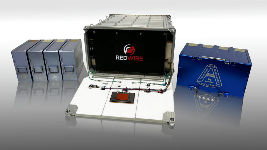
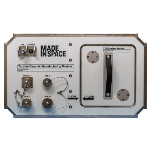
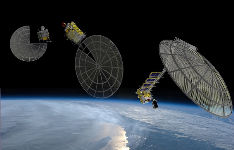
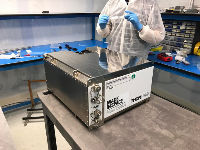
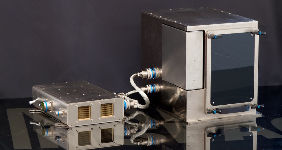
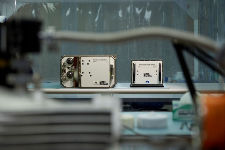
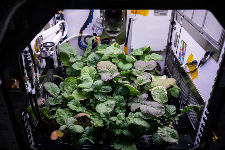
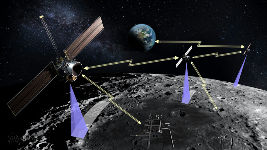
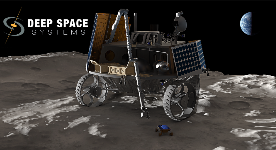
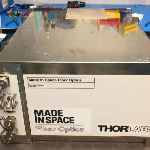
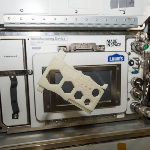

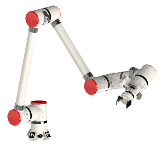
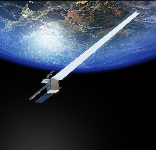
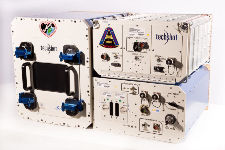













































































































































.png)



























.jpg)




















































































